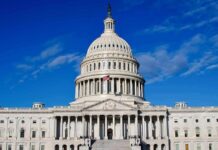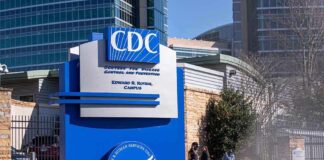
The EPA is undergoing significant changes, as hundreds of environmental justice workers face layoffs and role reassignments.
Key Insights
- EPA authorities are reducing its workforce by 65%, impacting its regulatory reach.
- 280 employees in environmental justice roles are set for termination.
- The administration plans to roll back several Biden-era policy initiatives.
- Federal statutes prevent sweeping dissolution of the EPA’s core functions.
EPA Restructuring and Implications
At the helm of the EPA’s restructuring is a plan to slash its workforce by 65%, a move aiming to reshape the agency’s mission. This includes terminating or reassigning community-focused employees, predominantly impacting environmental justice and diversity, equity, and inclusion (DEI) roles. Analysts argue this shift hampers efforts to tackle pollution in economically disadvantaged and minority communities, thus threatening strides in environmental justice.
“Today, EPA notified diversity, equity, and inclusion and environmental justice employees that EPA will be conducting a Reduction in Force in accordance with the Office of Personnel Management Workforce Reshaping Handbook and federal regulations governing RIF procedures,” EPA spokeswoman Molly Vaseliou said in an email. “The agency also notified certain statutory and mission-essential employees that they are being reassigned to other offices.”
EPA Administrator Lee Zeldin has publicly criticized the focus and usage of environmental justice grants, culminating in retracting funds where he argues the impact deviates from direct environmental remediation. In essence, the cutbacks are described as budgetary efficiency measures, aligning with broader Trump-era policy directives to minimize governmental reach and refocus on primary statutory obligations.
Regulatory and Legislative Constraints
The EPA, despite the planned cuts, remains bound by federal laws such as the Clean Air Act and Clean Water Act, which mandate ongoing adherence to core environmental safeguards. As judicial and congressional oversight continues, these legislative frameworks act as impediments to any overarching elimination plans.
The agency’s reorganization is reportedly part of a broader initiative set forth by an executive order aiming to overhaul the federal bureaucracy. Nevertheless, public sentiment remains favorable toward the EPA, appreciating its historic role in protecting human health and the environment, though not without facing criticism from various opposing industries.
EPA starts layoffs of environmental justice employees https://t.co/pgwsfIXEao pic.twitter.com/3nVi8HEuJv
— The Last Word (@TheLastWord) April 22, 2025
Future Outlook of Environmental Policy
The restructuring marks a pivotal shift in how the EPA approaches its mission, with a keen eye on minimizing financial burdens while aligning actions with statutory requirements. The agency foreshadows continued evaluations on policy impacts, aligning broader federal guidance and further integration of organizational efficiencies.
This restructuring, influenced by executive orders and legislative mandates, will play a crucial role in steering the EPA’s operational focus. As the climate and environmental sectors confront ongoing challenges, overseeing the balance between efficiency, compliance, and public accountability remains a pivotal task for the agency’s ensuing administrations.
Sources:
- EPA workforce cuts mean major changes to environmental regulations
- EPA’s ‘environmental justice’ employees face layoffs this summer
- EPA fires, reassigns 455 environmental justice staffers
- EPA starts layoffs of environmental justice employees

























